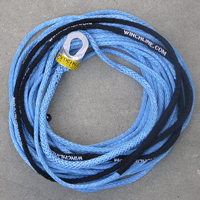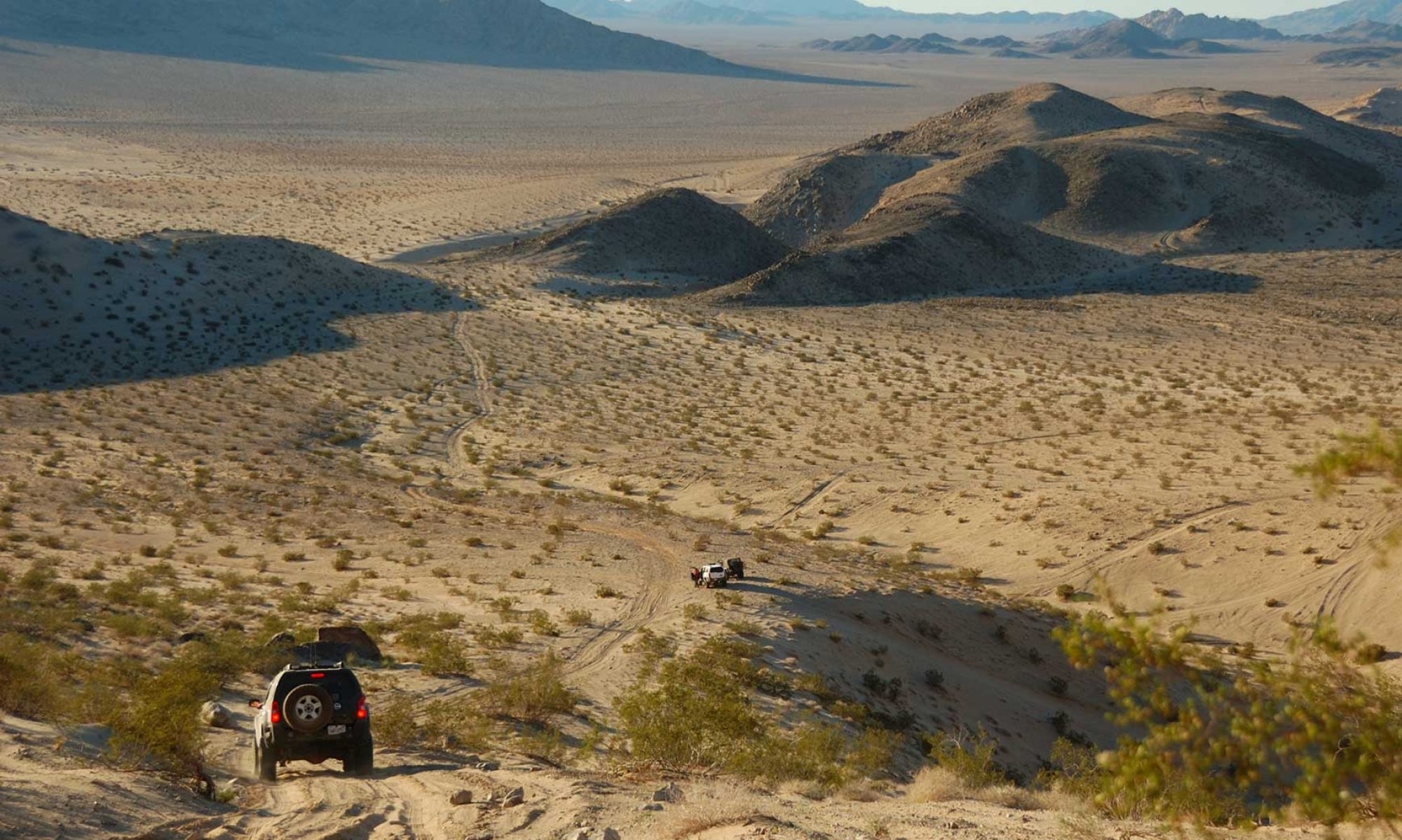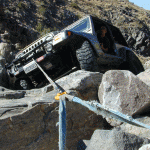 Safety: Both steel and synthetic winchlines give a very small amount of stretch, the equivalent of less than 1% at breaking pressure. This tiny amount of stretch stores kinetic energy that is released when the line breaks. Since steel winchline is much heavier than synthetic winchline, the force of that stored energy is devastatingly powerful, particularly dangerous with people near. The synthetic line is so light and therefore stores less kinetic energy, which when released, the winchline virtually falls to the ground with a fraction of the force of steel. For this reason, 4×4 offroad racing sanctioning bodies do not allow steel cables because of their inherent danger. Synthetic winchlines are now mandatory.
Safety: Both steel and synthetic winchlines give a very small amount of stretch, the equivalent of less than 1% at breaking pressure. This tiny amount of stretch stores kinetic energy that is released when the line breaks. Since steel winchline is much heavier than synthetic winchline, the force of that stored energy is devastatingly powerful, particularly dangerous with people near. The synthetic line is so light and therefore stores less kinetic energy, which when released, the winchline virtually falls to the ground with a fraction of the force of steel. For this reason, 4×4 offroad racing sanctioning bodies do not allow steel cables because of their inherent danger. Synthetic winchlines are now mandatory.
Training: While synthetic winchlines are much safer, recovery operations are still dangerous and we encourage all winch owners with steel or synthetic winchlines to attend safety and training classes from certified trainers such as: Bill Burke, Tom Severin, Bruce Elfstrom, Garrett Porter and others. See I4WDTA for more information.
Ease of Handling: Steel winch cables have a tendency to kink, rust, and have very sharp strands once nicked. They also tend to straighten by the nature of the material making them harder to spool back on the winch properly. Our synthetic winchlines have none of these problems. However, synthetic lines are more susceptible to sharp edges (bumpers in particular) and heat, but they are much stronger, safer and easier to work with.
Strength: Dyneema® synthetic winchline fiber is up to 15 times stronger than quality steel and 40% stronger than Aramid fibers on weight for weight basis. This means the replacement synthetic winchline is typically 35-45% stronger than steel cable! Steel cables are typically sized to match the strength of a winch. For example a 9,500 lb capacity winch will have roughly a 9,500-10,000 lb capacity steel cable. The replacement synthetic line would be 5/16″ (7.9mm) or 3/8″ (9.5mm). Our Viking Trail Lines are rated at 13,000 lb (4,6 metric ton) for the 5/16″ and 19,600 lb (6,2 metric ton) for 3/8″, making them approximately 27% and 49% stronger on the conservative side.
Buyer Beware: There are variations of very strong synthetic ropes that we have seen on the market. These can include Amsteel rather than AmSteel-Blue (both can be blue and virtually indistinguishable) and Dyneema SK-60 available as well. Viking Offroad will never substitute synthetic ropes of lesser strength or quality. We always use genuine AmSteel-Blueâ„¢ (Viking Trail Line) and Technoraâ„¢ (Viking Fire Line) for our winchlines.
Our winch lines are Genuine AmSteel-Blueâ„¢ with Samthaneâ„¢, a special coating to help resist abrasion. The raw material in AmSteel-Blueâ„¢ is made from Genuine Dyneema® SK-75 HMPE fiber, “which is the worlds strongest fiberâ„¢” made by DSM in the Netherlands.
Viking Trail Lines are used for recreational four wheeling, racing, and ATV’s. They are also used by the top trainers in the world including several military groups such as Navy Seals, Army Rangers and the Marines.
Originally posted at: http://www.vikingoffroad.com/recovery-gear.html


Definitely! I use only synthetic winchlines. It gives me piece of mind just knowing it’s not a piece of steel that could mutilate bystanders!